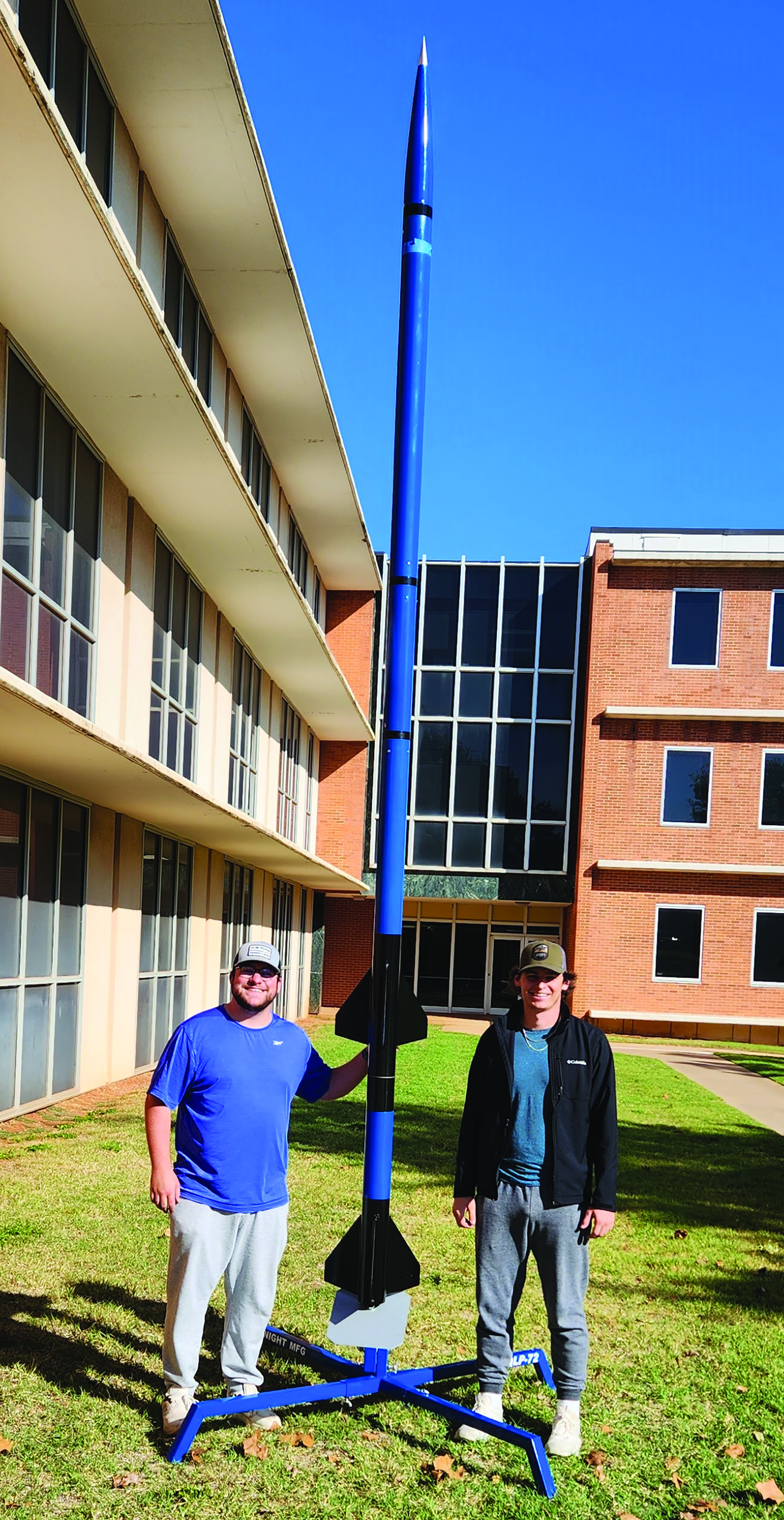Bringing Home the Argonia Cup—Again!
Winter
2024
SPS Chapters on Hands-on Projects
Bringing Home the Argonia Cup—Again!
Chris Svebek and Jessica Massey, SPS Members, Southwestern Oklahoma State University
In March 2023 the Rocket Dawgs, the rocketry team from our Physics and Engineering Club at Southwestern Oklahoma State University (SWOSU), took home its second consecutive Argonia Cup title!
Run by the Kloudbusters Rocketry Club, the Argonia Cup is an annual rocketry competition held in Rocket Pasture, an actual pasture near Argonia, Kansas, just north of the Oklahoma border. During the two-day competition held each spring, university teams try to meet a challenge over three competitive launches (and unlimited practice launches). The rules of the competition can change from year to year, depending on whether teams successfully met the previous year’s challenge. Because we nailed the challenge in 2022, there was a new challenge for 2023.
This year’s challenge was to fly a two-stage rocket to a minimum altitude of 9,000 feet above ground level and then land the payload (a golf ball) as close as possible to an X on the ground. Scores were determined by the equation A-20D, where A is the highest altitude of the rocket, D is the distance between the golf ball and the X, and all distances are measured in feet.
We wanted to go higher than 9,000 feet, so we designed a rocket with a 2.6-inch diameter that could easily reach 10,000 feet and possibly up to 16,000 feet.
A successful two-stage launch, in which the stages fully separate in flight, is hard to achieve. The main challenge is getting the second motor to ignite properly in flight. To do this, we used redundant timer-based ignition systems that also have tilt limits. The tilt limits make sure the second stage doesn’t ignite if the rocket is tilted by more than 20 degrees from vertical. Two-stage rockets also require twice as many electronics for recovery and deployment as single-stage rockets, and two-stage launches have more uncertainty. Further, the mechanical coupling between the two stages is full of opportunities for failure, including early and late release.
We planned to deliver the payload (the golf ball) to the X using a small quadcopter deployed by the rocket at its highest altitude. Using a rocket with a small diameter meant that we needed a small drone (quadcopter). We wanted a drone with 3-inch-diameter propellers that could hold a large battery yet fit into a 2.6-inch-diameter rocket (the propellers are linear and fit in the rocket tube lengthwise). So, we designed one. We ran into a few problems, but we were able to mitigate them.
At the Argonia Cup we were the only team to meet all the requirements of the competition: landing the golf ball and recovering all parts of the rocket in working condition. So, despite landing our golf ball 2.41 miles away from the X and a score of about -239,000 feet (yes, negative!), we still won the competition.
We’re now preparing for the 2024 challenge, to get the highest score calculated by A*((N/10) + 1) with a two-stage rocket, where A is the height (in feet) of the upper stage (sustainer) at apogee, and N is the number of golf balls carried in the sustainer. The total impulse of the motors must be less than or equal to 5120 Newton-seconds. See you at the competition!
The Rocket Dawgs are supported by Madeline Baugher and the Oklahoma NASA Space Grant Consortium, the SWOSU Department of Chemistry and Physics, SWOSU alums Sharon Hodges and Brock Mason, Daniel Gassen, and our amazing mentors John Yuthas, Dan Major, John Bolene, and Larry Ortega of the Tripoli Oklahoma Rocketry Club.

